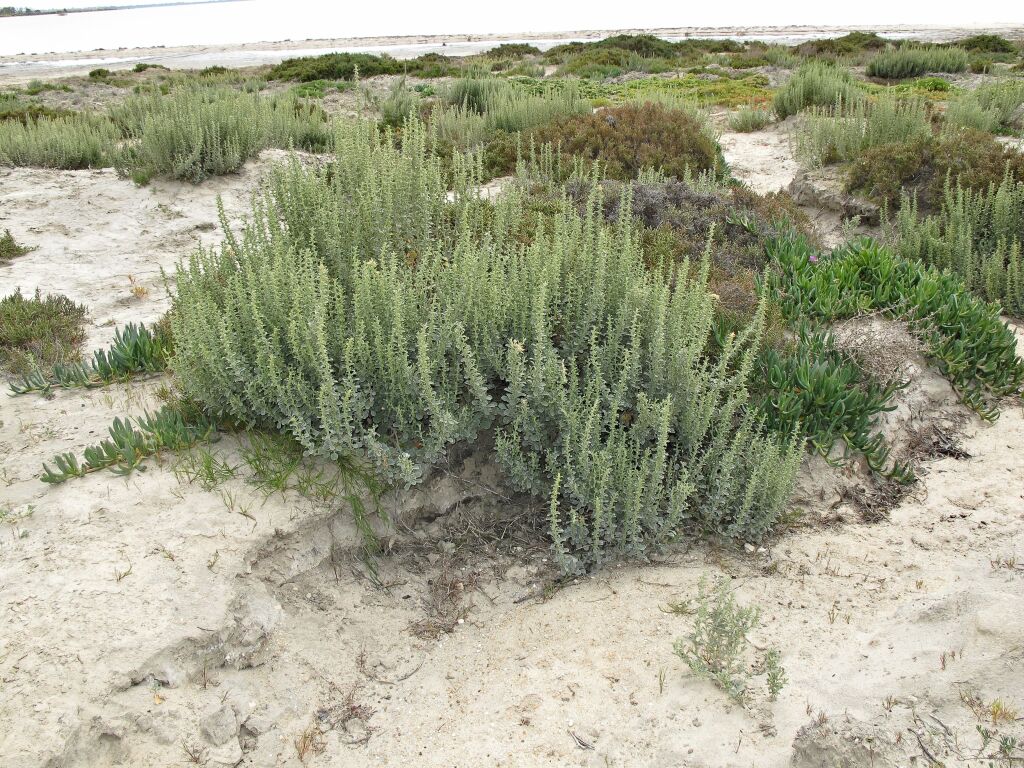Lawrencia glomerata
Hook. Clustered LawrenciaSoft-wooded, short-lived perennial subshrub to c. 50 cm high and wide, usually with several procumbent to erect branches from the base. Lower leaves petiolate, lamina obovate to cuneate, 1–4 cm long, 5–18 mm wide, margins crenate to serrate, surfaces subglabrous to densely stellate-tomentose; upper leaves sessile, smaller and relatively narrower than lower leaves, margins entire or commonly 3-toothed at apex. Flowers bisexual, sessile or subsessile, solitary or few in axils of floral leaves; calyx 3–6 mm long, 5-angled, shortly 5-lobed, strongly valvate in bud and fruit; petals largely or entirely free, obovate or spathulate, slightly exceeding sepals, white or yellow; anthers 15–25; styles 5. Fruit c. ovoid, 2–4 mm long, enclosed by calyx; mericarps indehiscent, pointed at apex, the inner walls finely reticulate-latticed. Flowers Aug.–Oct.
LoM, MuM, Wim, VVP, MSB. All mainland states. Locally common on loam and clay soils in the north-west, as far south as Natimuk district with isolated occurrences at Altona and Yan Yean near Whittlesea. Often occurring in saline or subsaline flats, depressions and around salt lakes, usually associated with mallee or samphire communities and sometimes colonizing disturbed or recently inundated ground.
Lander (1984) describes L. glomerata as polygamodioecious (with unisexual male and female and bisexual flowers on the one plant), but Victorian specimens examined at MEL appear to have only bisexual flowers.
Walsh, N.G. (1996). Lawrencia. In: Walsh, N.G.; Entwisle, T.J., Flora of Victoria Vol. 3, Dicotyledons Winteraceae to Myrtaceae, pp. 352–355. Inkata Press, Melbourne.
 Spinning
Spinning


